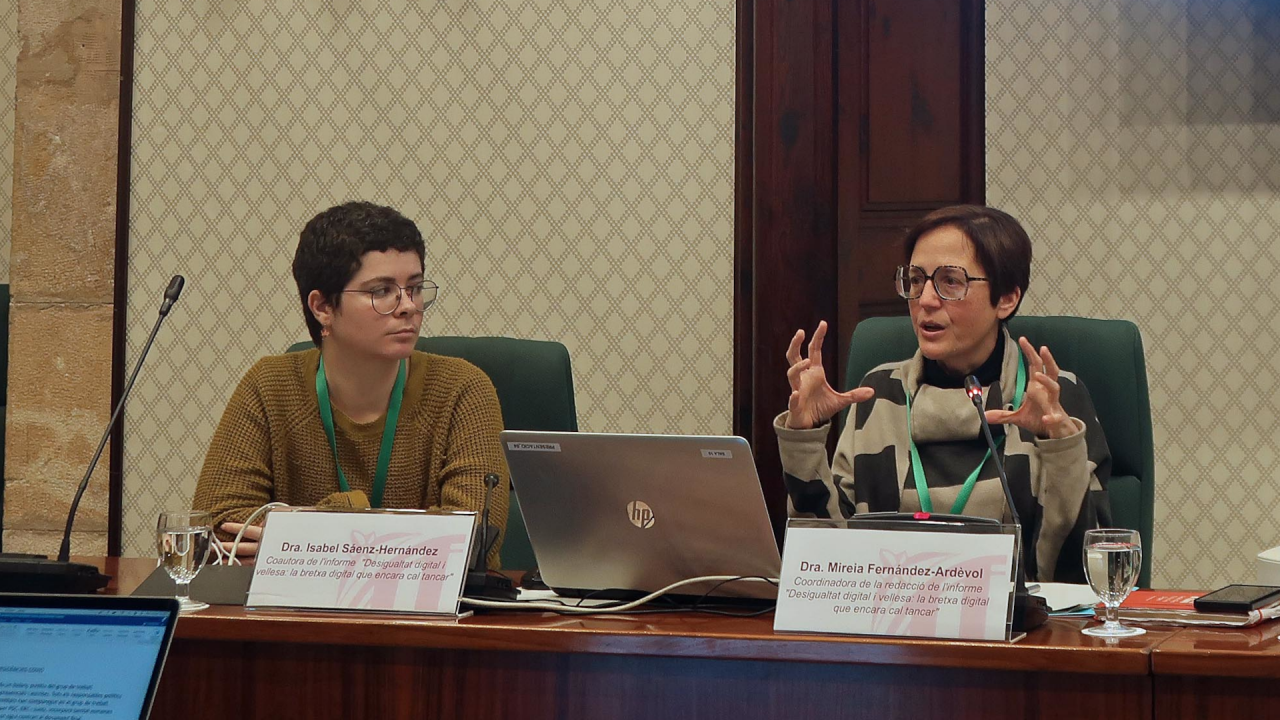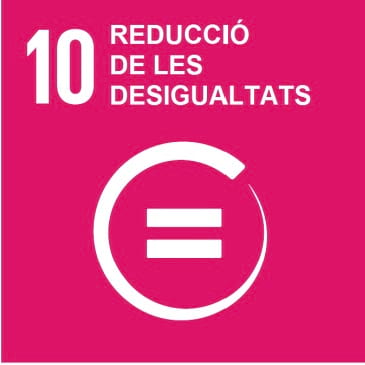Digital inequalities faced by older people have been exacerbated by COVID-19
According to a report, the digital divide is worse for women and older people, and for people living in rural areas, or with low levels of education or incomeThe study proposes a total of 12 recommendations to reduce the digital divide and promote digital inclusion of older people in Catalonia

Some 96% of Catalonia's population aged between 16 and 74 years old in 2022 were internet users. However, this rate declines among older people. In specific terms, the rate among the population aged 65 to 74 falls to 79%, and among the oldest segment of the population, aged 75 and over, it plummets to 42%, according to data for 2022 from Spain's National Statistics Institute. "The digital divide faced by elderly people in Catalonia is cause for concern. All the indicators available show disadvantages after the age of 65. Furthermore, among the older population as a whole, there is also a major digital divide: when data are available, they show that the segment aged 75 and over is significantly below that aged between 65 and 74 years old," explained Mireia Fernández-Ardèvol, a member of the Faculty of Information and Communication Sciences at the UOC (Universitat Oberta de Catalunya) and a researcher in the Communication Networks and Social Change (CNSC) research group at the university's Internet Interdisciplinary Institute (IN3).
Working with Sara Suárez-Gonzalo and Isabel Sáenz-Hernández, who also belong to the same faculty and research group, Fernández-Ardèvol has produced the report Desigualtat digital i vellesa: la bretxa digital que encara cal tancar, [Digital inequality and old age: the digital divide that remains to be bridged], which was commissioned by the Catalan Parliament's Science and Technology Advisory Board (CAPCIT) and presented to the legislative body last Wednesday. The study examines the factors behind this digital divide among the older population. This inequality has been accentuated by the COVID-19 pandemic, which accelerated a process of digitalization that has continued due to restrictions on mobility. "The digital divide is intersectional, as digital, social and economic inequalities intersect with each other, and it has a strong impact on the benefits that a person can obtain when they use the internet. The term socio-digital divide broadens the concept of the digital divide to show that digital inequality is another type of socio-economic inequality," said the report.
The factors behind this socio-digital divide include low levels of education, which limits how an individual uses the internet; low incomes, which determines whether they have an adequate connection and a number of digital devices for accessing the internet, and gender. "The digital divide affects women aged 75 and over to a comparatively greater extent than men," the report notes. "Although there is a lack of disaggregated data, it can be concluded that being a woman, a pensioner or having a low level of education is associated with below average levels of internet use in Catalonia," it adds.
Infrastructure conditions also affect this gap: while internet access reaches levels of 100% in municipalities with 50,000 inhabitants or more, the figure falls as the municipality's population declines, to the extent that the figure is only 26% for villages with fewer than 1,000 inhabitants. These small villages are precisely those subject to more pronounced ageing dynamics than urban areas. Furthermore, only 12% of the smaller municipalities have access to 5G technology, while the rate rises to 77% among those with more than 50,000 inhabitants, and in Barcelona it is 100%.
How do older people use the internet?
According to the report, the population aged 65 years old and over use the internet primarily for communication, including media such as WhatsApp. In fact, 100% of internet users aged between 65 and 74 years old use the internet for this reason, while this figure falls to 41% among those aged 75 or over. The figures for online banking are more worrying: these services are used by 62% of internet users between 65 and 74 years old, and by 21% in the segment over 75 years old.
The Catalan, Spanish and European governments have undertaken various initiatives to reduce the digital divide among older people, such as the National Pact for the Digital Society in Catalonia and the Digital Spain Strategy. The report makes twelve recommendations in order to counter this inequality and promote digital inclusion among older people in Catalonia:
1. Ensure that actions, plans, measures and strategies to counter the digital divide are guided by democratic and egalitarian principles, many of which are listed in declarations and charters of (digital) rights, and are focused on protecting citizens' rights and freedoms. This means recognizing digital technologies and the internet as universally accessible public goods.
2. Apply the pacts, measures, strategies and actions proposed by local, national or international organizations thoroughly and with safeguards for transparency. Independent public bodies overseeing their implementation and their adaptation to changes in the digital field must be given support.
3. Organize open training and information programmes adapted to citizens and older people in particular, to provide them with broad-based and up-to-date digital skills and capacities enabling them to access, use, understand and take advantage of the potential of the digital world according to their needs and desires.
4. Adopt instruments with standardized criteria for measuring digital skills and capacities, which are transparent and adapted to older people's diversity and specific local characteristics.
5. Promote the creation and continuation of counselling and support programmes and support and mediation networks where older people can share their learning, resolve their doubts, receive training and participate in the digital environment.
6. Raise awareness among the general public and economic and social agents about the fight against stereotypes related to old age which often lead those affected to experience a lack of confidence, self-esteem or self-efficiency that negatively impact older people's relationship with digital technology.
7. Promote co-governance and citizen participation in technological design, including the definition of measures, strategies, plans and actions to combat the digital divide.
8. Create simple and high-quality digital services, appropriate to the preferences and needs of all sectors of the population. This refers above all to services provided by public authorities, but also to essential services provided by private institutions. Guaranteeing a universal technological design which favours the digital inclusion of elderly people is also a central issue.
9. Underpin the provision of analogue (non-digital) services to prevent the negative effects of forced digitalization, and guarantee citizens' basic rights to essential services (electricity, banking, health, etc.).
10. Ensure the necessary investments are made so that all citizens, and older people in particular, have the resources they need to access, use and understand the internet, and the digital equipment appropriate for the tasks they need to carry out.
11. In order to promote research and public knowledge, data that reflect the situation of older people in terms of the digital world must be made available. These data must be broken down by age from 65 years upwards, and with no upper limit. The ability to analyse the (considerable) differences between the levels of digital inclusion and exclusion in the cohort aged 65-74 years old and the cohort aged 75 or over is essential.
12. Finally, all measures, plans, actions and strategies focused on combating the digital divide must complement others that reduce factors and trends that lead to socio-economic inequalities that affect older people in particular.
UOC R&I
The UOC's research and innovation (R&I) is helping overcome pressing challenges faced by global societies in the 21st century by studying interactions between technology and human & social sciences with a specific focus on the network society, e-learning and e-health.
Over 500 researchers and more than 50 research groups work in the UOC's seven faculties, its eLearning Research programme and its two research centres: the Internet Interdisciplinary Institute (IN3) and the eHealth Center (eHC).
The university also develops online learning innovations at its eLearning Innovation Center (eLinC), as well as UOC community entrepreneurship and knowledge transfer via the Hubbik platform.
Open knowledge and the goals of the United Nations 2030 Agenda for Sustainable Development serve as strategic pillars for the UOC's teaching, research and innovation. More information: research.uoc.edu.
Experts UOC
-
Anna Sánchez-Juárez

